Dating apps changed the way people found love over the last ten years. But now, the excitement is wearing off.
These days, finding a meaningful connection feels more like a struggle, and the dating industry is facing that same pressure.
While apps are focused on making money, users are feeling let down.
This growing gap became more visible when Tinder’s CEO, Faye Iosotaluno, recently stepped down, a move that reflects the rising tension in the world of dating apps.
So, what’s going wrong? Why are millions of users swiping daily, yet still feeling disconnected and frustrated?
Let’s get to know about it all through this blog, where we will discuss why dating apps fail, what they lack and how they can improve one by one so that your app doesn’t become another failure.
Understanding the Whole Dating App Scene
With growing demand in the market, many entrepreneurs want to create a dating app and hop on the growing trend.
But what are they?
Dating apps are platforms that help people meet and connect for relationships, whether casual or serious.
You set up a profile with photos and a short bio, then scroll through potential matches based on your interests and location.
If two people like each other, they can start chatting. Apps like Tinder and Bumble are great examples of how dating has become accessible.
They offer convenience, but they also come with downsides, like shallow conversations, ghosting, and emotional burnout.
Still, dating apps continue to grow, adding new features like video chats and better matching tools to help people find real connections.
But, here is the thing: Why are so many people interested in starting their own online dating business? Here are dating app stats to tell you exactly why:
-
- The global online dating market is expected to grow from USD 9.4 billion in 2023 to USD 18.1 billion by 2033, at a CAGR of 6.8% from 2024 to 2033.
- North America dominated the market in 2023, capturing over 40% share, with revenue reaching USD 3.7 billion.
- The number of online dating users is projected to reach 462.5 million by 2029.
- User penetration is estimated at 5.2% in 2025 and is expected to rise to 5.7% by 2029.
- The average revenue per user (ARPU) is forecasted to be around USD 7.83.
- In global comparison, the United States is expected to generate the highest revenue, around USD 1.43 billion in 2025.
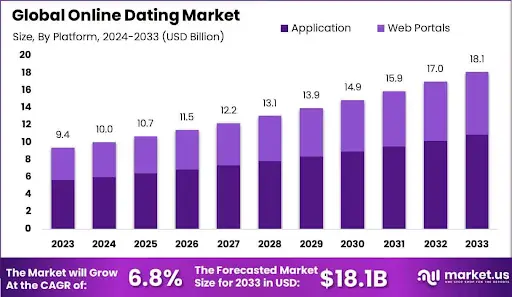
There's no doubt the dating app market is booming. More people are signing up than ever, yet many still walk away feeling frustrated, disconnected, or just plain tired of the whole experience.
Before you start your dating app business, it is necessary to be clear about why they fail in the first place, so that you can avoid such things.
Why Dating Apps Fail?
While dating apps promised a world of effortless matches, dating app development challenges like fake profiles and poor retention make the reality far more complicated.
Despite millions of users and billions in revenue, many platforms are falling short of what people actually want, a real connection.
So, what’s going wrong? Below are some of the key reasons why dating apps fail, and what’s causing users to swipe away for good.
1. Not Getting Enough Downloads
You built the app. It works great. But barely anyone is downloading it.
This is one of the most frustrating reasons why dating apps fail. Most startups assume that building a solid product is enough.
But without discoverability, your app is invisible. And if no one sees it, no one tries it, simple as that.
What You Can Do: Start with a strong pre-launch strategy.
Create buzz early with waitlists, early access rewards, and influencer seeding. Focus on real storytelling in your marketing. Why does your app matter? Also, remember: marketing takes patience.
Downloads don’t blow up overnight, but with consistent push and compelling positioning, growth becomes predictable.
2. High Uninstall Rate (Due to Unsafe Content)
You get downloads, but users are uninstalling within days.
That’s usually a red flag for content moderation.
One of the biggest reasons why dating apps are losing popularity is the flood of fake profiles, bots, and adult content.
Users feel unsafe or overwhelmed and leave. Trust, once broken, rarely returns.
What You Can Do: Implement an advanced cloud-based content moderation tool like Lasso.
Scams, fake profiles, and inappropriate content can quickly damage user trust and hurt your brand’s reputation.
Lasso’s AI-driven content moderation platform helps you stay ahead with real-time, scalable tools that keep your app safer, cleaner, and more authentic for every user.
Let users know your platform takes safety seriously. Add content filters and real-time moderation.
Show people that your app is a safe space.
When people trust your platform, they stick around and that long-term engagement is what leads to growth and investor confidence.
3. No Unique Selling Point
If your app is just “Tinder, but better,” you're already losing.
A major reason for matchmaking apps failure is the lack of originality.
The swipe-left/swipe-right format has been done to death. If you're not doing something different, visually, functionally, or emotionally, users will just stick to what they know.
What You Can Do: Stand for something. Design with intention.
Maybe you target gamers, travellers, or plant lovers. Maybe you offer mood-based matching or guided first-date ideas.
Your dating app design and experience should feel nothing like Tinder or Bumble. Give users something fresh and emotionally rewarding. That’s how you earn loyalty, not by cloning giants.
4. Emotionally Empty User Experience
Current dating app trends reveal a shift: users are tired of transactional swiping.
Users may match, but they often don’t connect, and they feel it. That’s why many dating apps fail even with high install numbers.
Without emotional resonance or purpose, dating feels like scrolling through a catalogue. The result? Disengagement and eventual churn.
What You Can Do: Build an experience, not just a utility.
Add deeper profile prompts, personalized conversations, community-building features, or date-planning tools.
Make it feel like more than just matching.
When users feel something like hope, curiosity, or connection, they’ll return. Build emotional value, and you build user retention. Simple as that.
5. Poor Personalization
Users want matches that feel intuitive and real, not just people in their zip code.
Basic filters like age and gender aren’t enough anymore.
A lack of intelligence in dating app algorithms is a huge reason why dating apps fail today. It shows users the platform doesn’t “get” them.
What You Can Do: Use behavioural data, interests, tone of voice, and even conversation patterns to fuel smarter matchmaking.
Integrate machine learning that improves with each interaction. Offer users smarter, more aligned connections, not just more profiles.
Personalization turns passive users into power users. And that’s where your retention and monetization kick in.
6. Weak or Rushed Marketing Strategy
Your product might be amazing. Your design may be flawless.
But if your marketing is half-baked, the app will flop.
This is a silent killer behind many dating app startup failures. People underestimate just how noisy and competitive the app stores are. You can’t just “launch and hope.”
What You Can Do: Plan your marketing as early as your MVP.
Invest in influencer UGC, SEO, PR outreach, niche communities, and emotional storytelling. Measure everything: CPI, retention by channel, and creative performance.
And again, marketing takes patience. Even viral hits didn’t happen in one day. Stay consistent, learn from the data, and refine your message.
7. No Proper Verification or Trust Systems
In today’s online world, users are skeptical.
If your platform feels unverified or spammy, users won’t take the risk.
And this directly contributes to the failure of dating apps, especially newer ones trying to gain user trust without a brand reputation.
What You Can Do: Trusted verification platforms like Veriff can be used to onboard users securely.
Show proof of trust verified badges, community rules, safety prompts, and moderation transparency.
These elements build early confidence.
And when your earliest users trust you, they become your best marketers. Safe platforms grow faster because people feel seen, protected, and respected.
8. Bad UX and Cluttered Design
You may think you’ve packed in amazing dating app features, but if users can’t navigate them, it doesn’t matter.
Complex onboarding, tiny buttons, slow-loading profiles? These are daily complaints that lead to silent exits.
Poor design is a massive but underrated reason why dating apps fail.
What You Can Do: Think mobile-first. Simplify your flows.
Use whitespace, calming colours, large CTAs, and frictionless interactions.
Design like your user is tired, scrolling at 2 AM, and they need to feel welcomed, not overwhelmed.
Good UX is invisible but unforgettable. Great design alone can drive word-of-mouth and app store reviews.
9. No Brand Identity or Emotional Hook
What do you stand for? If your app has no mission, tone, or emotion, people won’t care.
And if they don’t care, they won’t return.
Lack of a strong brand is another subtle but real reason dating apps are losing popularity in a saturated market.
What You Can Do: Give your brand a soul.
Be playful, raw, inclusive, or insightful, but be something.
Every notification, every error message, every prompt should sound like you.
When users connect emotionally with your tone, they become loyal. Branding is more than logos; it’s a personality users remember and talk about.
10. Poor Post-Match Experience
You got the match, but now what? Many dating apps stop right there.
But that’s not enough. No conversation starters, no activity suggestions, no sense of momentum, and then users just drop off.
This gap is a key reason for matchmaking app failure.
What You Can Do: Design the post-match experience.
Add AI conversation helpers, speed video dates, compatibility quizzes, or shared goals.
Even little nudges like “Ask them about their dream trip” can spark magic. You’re not just matching people, you’re helping them bond.
Make that connection journey smoother and richer.
To be a top dating app, you need to make sure your app provides what users are looking for and let them connect.
What Failed Dating Apps Can Teach You: Real Case Studies and Hard Truths
Not every dating app makes it to Tinder-level success, and the graveyard of failed apps is bigger than you think.
Some had funding. Some had buzz. But still, they flopped. Why? Because love might be timeless, but product-market fit isn’t.
In this section, we’re breaking down real case studies to explore why dating apps fail, what mistakes founders repeatedly make, and what you can learn before launching your own.
1] Spoonr
Spoonr was launched on September 18, 2014. The app was founded by Charlie Williams and was known as ‘Tinder for Cuddling’.
It has a drastic start to say the least, and was reviewed by the Washington Post and was termed as being creepy.
Moreover, the app had a hard time getting users to understand what it was really about.
It was designed for platonic intimacy, but many people mistook it for just another hookup app.
On top of that, technical issues kept piling up. It shut down in 2015, came back briefly as Spoonr, and eventually closed for good in 2017.
Investors Takeaway: Make sure your app’s core purpose is crystal clear- confusion around intent can kill traction faster than competition or funding gaps.
2] Hater
Hater was not loved by fans.
The app was launched by former Goldman Sachs banker Branden Alpher. The app was launched with a vision of connecting people who have the same dislikes.
The app launched in 2017 and quickly gained attention, racking up one million downloads.
It stood out by letting users match over 4,000 quirky topics, like cargo shorts, building IKEA furniture, and even the sound of vomiting.
Despite the initial buzz, the app struggled to gain long-term support and couldn’t sustain itself. By 2018, it shut down completely.
3] HowAboutWe
HowAboutWe tool a fresh approach to online dating based on real-world experiences.
Instead of swiping, users would suggest actual dates, such as How About We grab dinner?
That unique angle earned the app the title of “Offline dating app.” When it launched in 2010, even GQ praised it for aiming to reinvent internet dating.
In 2014, the App was acquired by InterActiveCorp (IAC) and later shut down by it.
4] Bang With Friends
Down, formerly known as “Bang with Friends,’’ started as a web app that connected users with Facebook friends interested in casual hookups.
Users signed in through Facebook and saw which friends had also installed the app, then tapped “Down to Bang” to express interest.
In 2013, due to a trademark conflict with Zynga, it rebranded as “Down.”
Along with a new logo and less explicit branding, it introduced a smarter recommendation algorithm based on mutual friends and user interest.
5] GreatBoyfriends.com & GreatGirlfriends.com
Launched in 2002, GreatBoyfriends and GreatGirlfriends were two unique dating platforms created by Elle Magazine columnist E. Jean Carroll and her sister, Cande Carroll.
The idea was refreshingly different based on the belief that everyone knows a great ex worth recommending.
Instead of swiping, people could vouch for their former partners, helping them find love again through trusted word-of-mouth.
The site shut down after being acquired by the wedding platform The Knot in 2005.
How JPLoft Can Help You Develop a Successful Dating App?
Looking to build the next Tinder success story?
At JPLoft, the best dating app development company, we don’t just build dating apps; we engineer digital chemistry.
Our team has powered platforms like Truublue, Machha, and Zenzephyr, blending emotional UX, AI-driven matchmaking, and scalable tech architecture to drive real retention and revenue.
From MVPs to full-scale launches, we help you go beyond swipes and likes to create apps that connect, engage, and grow.
Whether it’s about trust, personalization, or post-match momentum, our solutions are rooted in deep industry insight.
Let’s craft something your users fall in love with and your investors can believe in.
Conclusion
The failure of dating apps isn’t just about tech or funding; it’s about ignoring what real users truly want: emotional connection, safety, and intention.
As the dating space becomes more saturated, standing out requires more than swipes and pretty UI. It calls for empathy-led design, powerful features, and clear differentiation.
Whether you’re planning to disrupt the market or refine an existing app, understanding these failure points is your blueprint to success.
Partner with the right team, focus on user experience, and build something that feels human, not transactional. With the right strategy, your app won’t just survive. It will thrive.
FAQs
Good design is important, but without emotional engagement, safety protocols, or a unique value proposition, users lose interest quickly.
Smart matching algorithms, verification systems, user safety tools, video chat, and meaningful onboarding experiences are must-haves.
Typically 3–6 months for an MVP. Complex features like AI matchmaking, content moderation, or AR may extend timelines.
We focus on product-market fit, user behaviour, and emotional UX design from day one. Our strategic roadmap minimizes risk.
Costs start from $25,000 for a basic version and can go up to $150,000+ depending on features, platforms, and scalability.





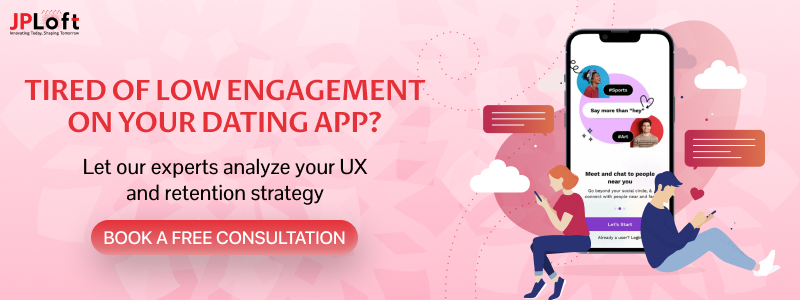
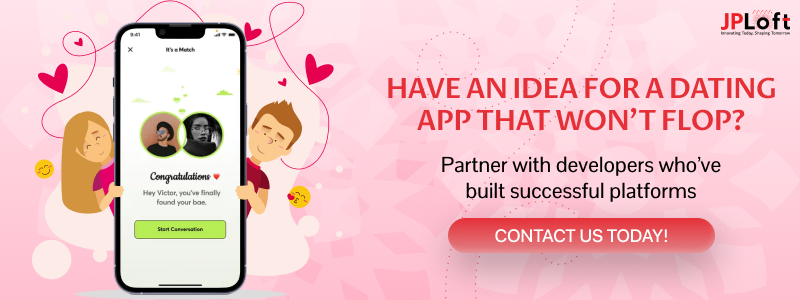

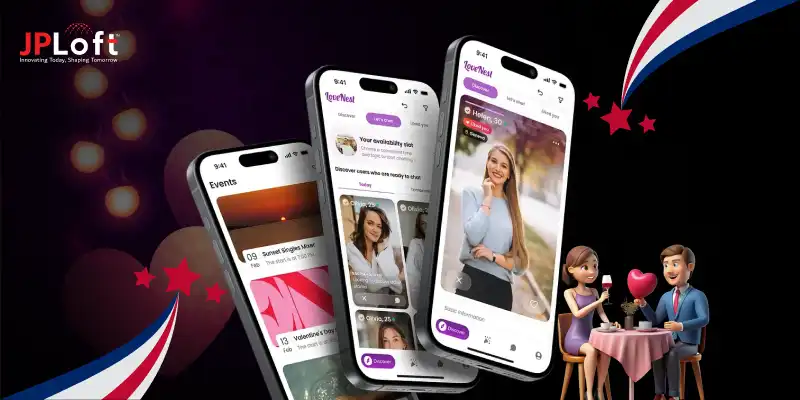
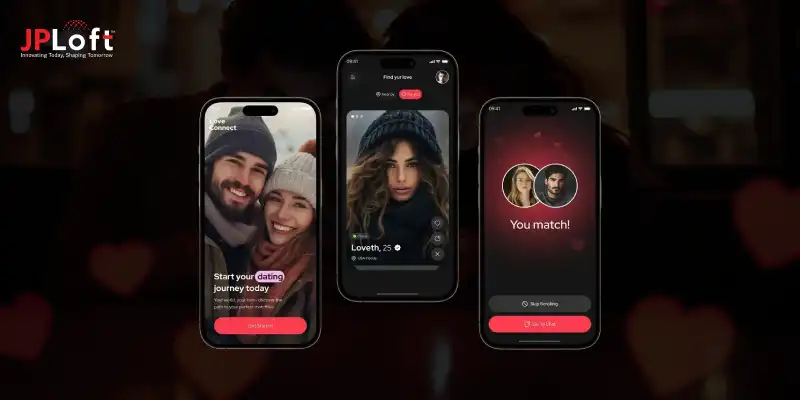
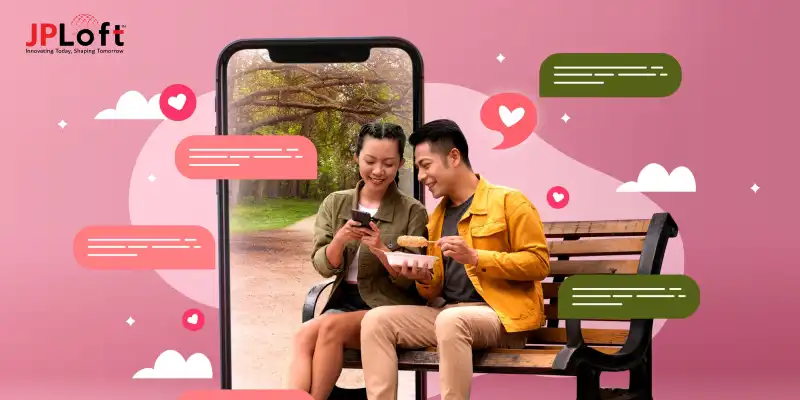


Share this blog